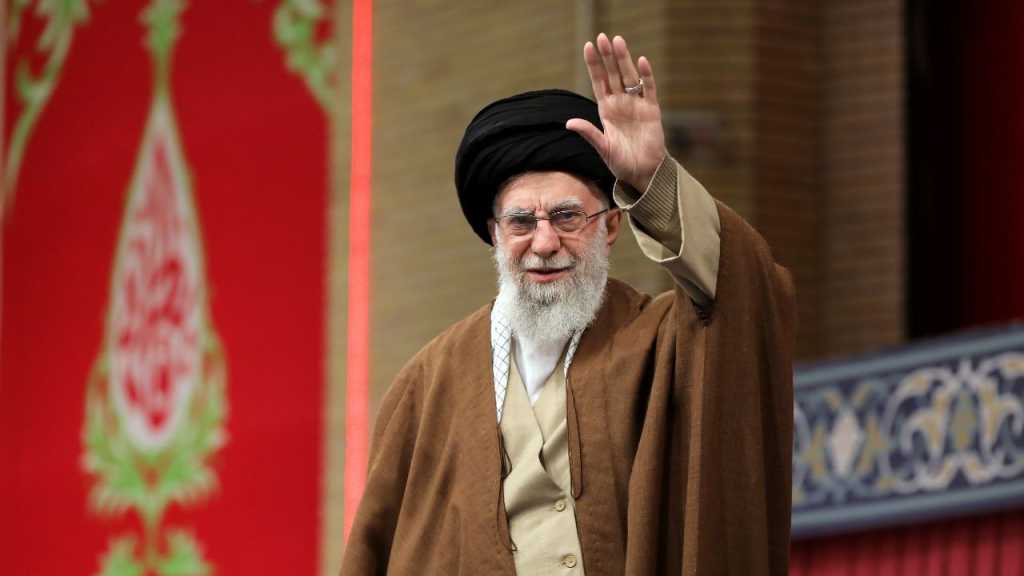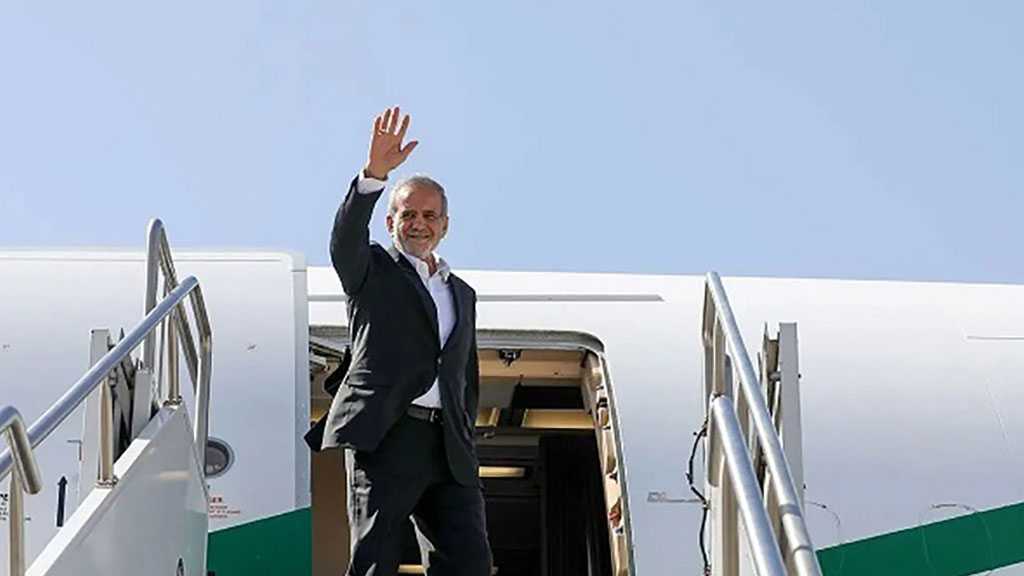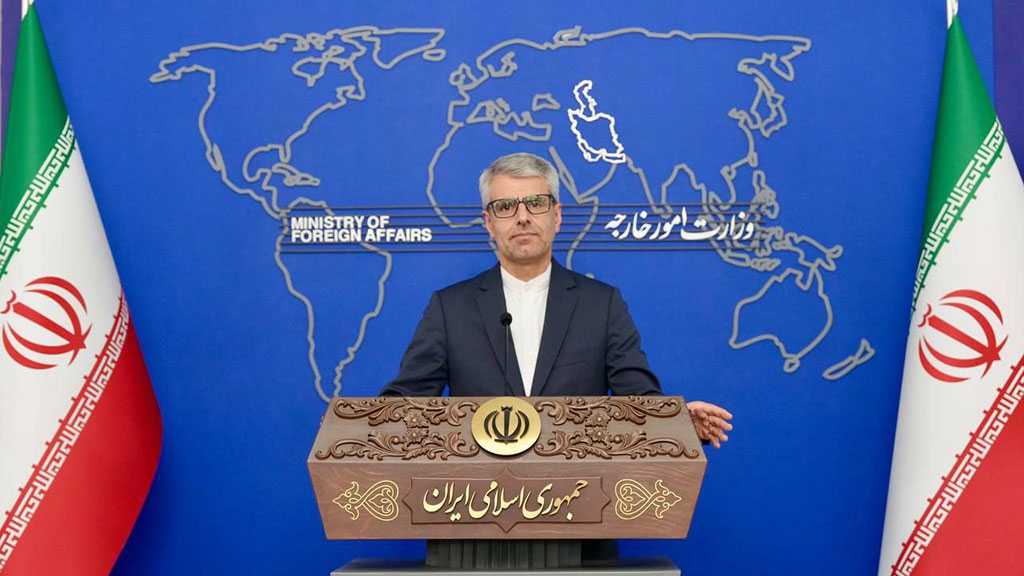Nineteen Years on Departure of Islamic Republic Founder

Source: Al-Manar TV, 4-6-2008
Imam Rouhullah Al-Mousawi Al-Khomeini was born on September 24, 1902 into a family of strong religious traditions in Khomein, a small town some hundred kilometers southwest of Tehran.
His father, Ayatollah Mustafa was murdered by bandits only five month after the birth of Ruhullah, so that his mother and aunt were responsible for his early upbringing. At the age of nineteen, the young Imam Khomeini was sent to study the religious sciences in the nearby town of Arak under the guidance of Sheikh 'Abd al-Karim Ha'iri.
In 1922, the young Imam Khomeini moved to holy city of Qom, and took up residence at the Dar al-Shafa school before being exiled to the holy city of Najaf in Iraq.
Although during this scholarly phase of his life Khomeini was not politically active, the nature of his studies, teachings, and writings suggest that he believed early on in the importance of political involvement by clerics. Khomeini studied not only traditional subjects like Islamic jurisprudence (fiqh al-Shari'a), and principles (Usul), but also philosophy and ethics. His teaching often focused on the importance of religion to practical social and political issues of the day.
Ayatollah Khomeini was now 60 and had assumed leadership following the deaths of Ayatollah Sayyed Muhammad Burujerdi (1961), the leading Shiite religious leader; and Ayatollah Abol-Ghasem Kashani (1962), an activist cleric. The clerical class had been on the defensive ever since the 1920s with the rise to power of Shah Reza Pahlavi. The "White Revolution" of Reza's son Shah Muhammad Reza, was a further challenge. In January 1963, the Shah announced the "White Revolution", a six-point delusive program to curb the expansion of anti-Shah clerical influence in Iran. Ayatollah Khomeini summoned a meeting of the other senior Marjaas of Qom and agreed with them to decree a boycott of the referendum on the White Revolution. On January 22, 1963 Khomeini issued a strongly worded declaration denouncing the Shah and his pro-Western plans. Two days later Shah took armored column to Qom, and he delivered a speech harshly attacking the Ulama (clerics) as a class. Imam Khomeini continued his denunciation of the Shah's programs, issuing a manifesto that bore the signatures of eight other senior Iranian Shia religious scholars. In it he listed the various ways in which the Shah had violated the constitution, condemned the spread of moral corruption in the country, and accused the Shah of submission to America and "Israel".
On the afternoon of 'Ashoura (June 3, 1963), Ayatollah Khomeini delivered a speech at the Feyziyeh madrasah denouncing the Shah as a "wretched miserable man", and warning him that if he did not change his ways the day would come when the people would offer up thanks for his departure from the country.
On June 5, 1963, Imam Khomeini was arrested. This sparked three days of major protests throughout Iran and led to the killing of some 400 pro-Khomeini protesters. The Imam was kept under house arrest for 8 months and he was released in 1964.
During November 1964, Ayatollah Khomeini denounced both the Shah and the United States, this time in response to the "capitulations" or diplomatic immunity granted by the Shah to American military personnel in Iran. In November 1964, Imam Khomeini was re-arrested and sent into exile.
In early 1970 Khomeini gave a series of lectures in Najaf on Islamic Government, later published as a book titled variously Islamic Government or Authority of the Jurist (Welayat al-Faqih).
Khomeini spent over 14 years in exile, mostly in the holy city of Najaf, Iraq. Initially he was sent to Turkey on 4 November 1964 where he stayed in the city of Bursa for less than a year. Later in October 1965 he was allowed to move to Najaf, Iraq, where he stayed until being forced to leave in 1978, after then-Vice President Saddam Hussein killed his son Mustapha and forced the Imam out after which he went to Neauphle-le-Château in France where he stayed for four months.
Imam Khomeini became the most influential leader of the opposition to the Shah perceived by many Iranians as the spiritual, if not political, leader of revolution. As protest grew so did his profile and importance. Although thousands of kilometers away from Iran in Paris, Khomeini set the course of the revolution, urging Iranians not to compromise and ordering work stoppages against the regime.
Imam Khomeini had refused to return to Iran until the Shah left. On January 16, 1979, the Shah did leave the country, never to return. Two weeks later on Thursday, February 1, 1979, Imam Khomeini returned in triumph to Iran, welcomed by a joyous crowd estimated at least three million.
Fearing a spread of the Islamic revolution to Arab states, most of which were ruled by pro-American governments, Saddam Hussein, Iraq's Ba'athist leader, launched his full scale invasion against the Islamic Republic starting what would become the eight-year-long Iran-Iraq War. Saddam had received support from the US, Jordan and several other Arab states.
By early 1982 Iran regained almost all the territory lost to the invasion. After this reversal, Imam Khomeini refused an Iraqi offer of a truce, instead demanding reparation and toppling of Saddam Hussein from power. The war continued for another six years.
By 1988, Imam Khomeini, in his words, "drank the cup of poison" and accepted a truce mediated by the United Nations.
As the war ended, Imam Khomeini's health began to decline.
After eleven days in a hospital for an operation to stop internal bleeding, Imam Khomeini died of cancer on Saturday, June 3, 1989, at the age of 89. Millions of Iranians poured out into the cities and streets to mourn the death of the Ayatollah. Iranian officials aborted Khomeini's first funeral, after a large crowd stormed the funeral procession, nearly destroying Khomeini's wooden coffin in order to get a last glimpse of his body. At one point, Khomeini's body actually almost fell to the ground, as the crowd attempted to grab pieces of the death shroud. The second funeral was held under much tighter security. Imam Khomeini's casket was made of steel, and heavily armed security personnel surrounded it. In accordance with Islamic tradition, the casket was only to carry the body to the burial site. Imam Khomeini's funeral was the largest in history, with more than 12 million people attending the procession.
Imam Rouhullah Al-Mousawi Al-Khomeini was born on September 24, 1902 into a family of strong religious traditions in Khomein, a small town some hundred kilometers southwest of Tehran.
His father, Ayatollah Mustafa was murdered by bandits only five month after the birth of Ruhullah, so that his mother and aunt were responsible for his early upbringing. At the age of nineteen, the young Imam Khomeini was sent to study the religious sciences in the nearby town of Arak under the guidance of Sheikh 'Abd al-Karim Ha'iri.
In 1922, the young Imam Khomeini moved to holy city of Qom, and took up residence at the Dar al-Shafa school before being exiled to the holy city of Najaf in Iraq.
Although during this scholarly phase of his life Khomeini was not politically active, the nature of his studies, teachings, and writings suggest that he believed early on in the importance of political involvement by clerics. Khomeini studied not only traditional subjects like Islamic jurisprudence (fiqh al-Shari'a), and principles (Usul), but also philosophy and ethics. His teaching often focused on the importance of religion to practical social and political issues of the day.
Ayatollah Khomeini was now 60 and had assumed leadership following the deaths of Ayatollah Sayyed Muhammad Burujerdi (1961), the leading Shiite religious leader; and Ayatollah Abol-Ghasem Kashani (1962), an activist cleric. The clerical class had been on the defensive ever since the 1920s with the rise to power of Shah Reza Pahlavi. The "White Revolution" of Reza's son Shah Muhammad Reza, was a further challenge. In January 1963, the Shah announced the "White Revolution", a six-point delusive program to curb the expansion of anti-Shah clerical influence in Iran. Ayatollah Khomeini summoned a meeting of the other senior Marjaas of Qom and agreed with them to decree a boycott of the referendum on the White Revolution. On January 22, 1963 Khomeini issued a strongly worded declaration denouncing the Shah and his pro-Western plans. Two days later Shah took armored column to Qom, and he delivered a speech harshly attacking the Ulama (clerics) as a class. Imam Khomeini continued his denunciation of the Shah's programs, issuing a manifesto that bore the signatures of eight other senior Iranian Shia religious scholars. In it he listed the various ways in which the Shah had violated the constitution, condemned the spread of moral corruption in the country, and accused the Shah of submission to America and "Israel".
On the afternoon of 'Ashoura (June 3, 1963), Ayatollah Khomeini delivered a speech at the Feyziyeh madrasah denouncing the Shah as a "wretched miserable man", and warning him that if he did not change his ways the day would come when the people would offer up thanks for his departure from the country.
On June 5, 1963, Imam Khomeini was arrested. This sparked three days of major protests throughout Iran and led to the killing of some 400 pro-Khomeini protesters. The Imam was kept under house arrest for 8 months and he was released in 1964.
During November 1964, Ayatollah Khomeini denounced both the Shah and the United States, this time in response to the "capitulations" or diplomatic immunity granted by the Shah to American military personnel in Iran. In November 1964, Imam Khomeini was re-arrested and sent into exile.
In early 1970 Khomeini gave a series of lectures in Najaf on Islamic Government, later published as a book titled variously Islamic Government or Authority of the Jurist (Welayat al-Faqih).
Khomeini spent over 14 years in exile, mostly in the holy city of Najaf, Iraq. Initially he was sent to Turkey on 4 November 1964 where he stayed in the city of Bursa for less than a year. Later in October 1965 he was allowed to move to Najaf, Iraq, where he stayed until being forced to leave in 1978, after then-Vice President Saddam Hussein killed his son Mustapha and forced the Imam out after which he went to Neauphle-le-Château in France where he stayed for four months.
Imam Khomeini became the most influential leader of the opposition to the Shah perceived by many Iranians as the spiritual, if not political, leader of revolution. As protest grew so did his profile and importance. Although thousands of kilometers away from Iran in Paris, Khomeini set the course of the revolution, urging Iranians not to compromise and ordering work stoppages against the regime.
Imam Khomeini had refused to return to Iran until the Shah left. On January 16, 1979, the Shah did leave the country, never to return. Two weeks later on Thursday, February 1, 1979, Imam Khomeini returned in triumph to Iran, welcomed by a joyous crowd estimated at least three million.
Fearing a spread of the Islamic revolution to Arab states, most of which were ruled by pro-American governments, Saddam Hussein, Iraq's Ba'athist leader, launched his full scale invasion against the Islamic Republic starting what would become the eight-year-long Iran-Iraq War. Saddam had received support from the US, Jordan and several other Arab states.
By early 1982 Iran regained almost all the territory lost to the invasion. After this reversal, Imam Khomeini refused an Iraqi offer of a truce, instead demanding reparation and toppling of Saddam Hussein from power. The war continued for another six years.
By 1988, Imam Khomeini, in his words, "drank the cup of poison" and accepted a truce mediated by the United Nations.
As the war ended, Imam Khomeini's health began to decline.
After eleven days in a hospital for an operation to stop internal bleeding, Imam Khomeini died of cancer on Saturday, June 3, 1989, at the age of 89. Millions of Iranians poured out into the cities and streets to mourn the death of the Ayatollah. Iranian officials aborted Khomeini's first funeral, after a large crowd stormed the funeral procession, nearly destroying Khomeini's wooden coffin in order to get a last glimpse of his body. At one point, Khomeini's body actually almost fell to the ground, as the crowd attempted to grab pieces of the death shroud. The second funeral was held under much tighter security. Imam Khomeini's casket was made of steel, and heavily armed security personnel surrounded it. In accordance with Islamic tradition, the casket was only to carry the body to the burial site. Imam Khomeini's funeral was the largest in history, with more than 12 million people attending the procession.




